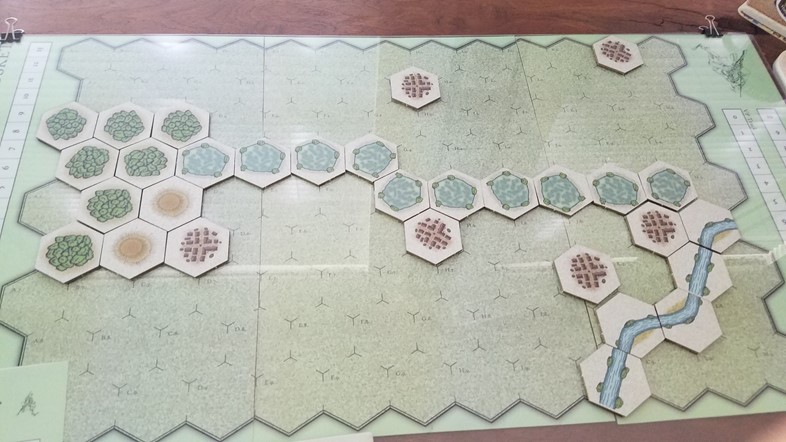
Taking a different tack is fast becoming the mantra of Hollandspiele games: Horse & Musket joins these ranks.
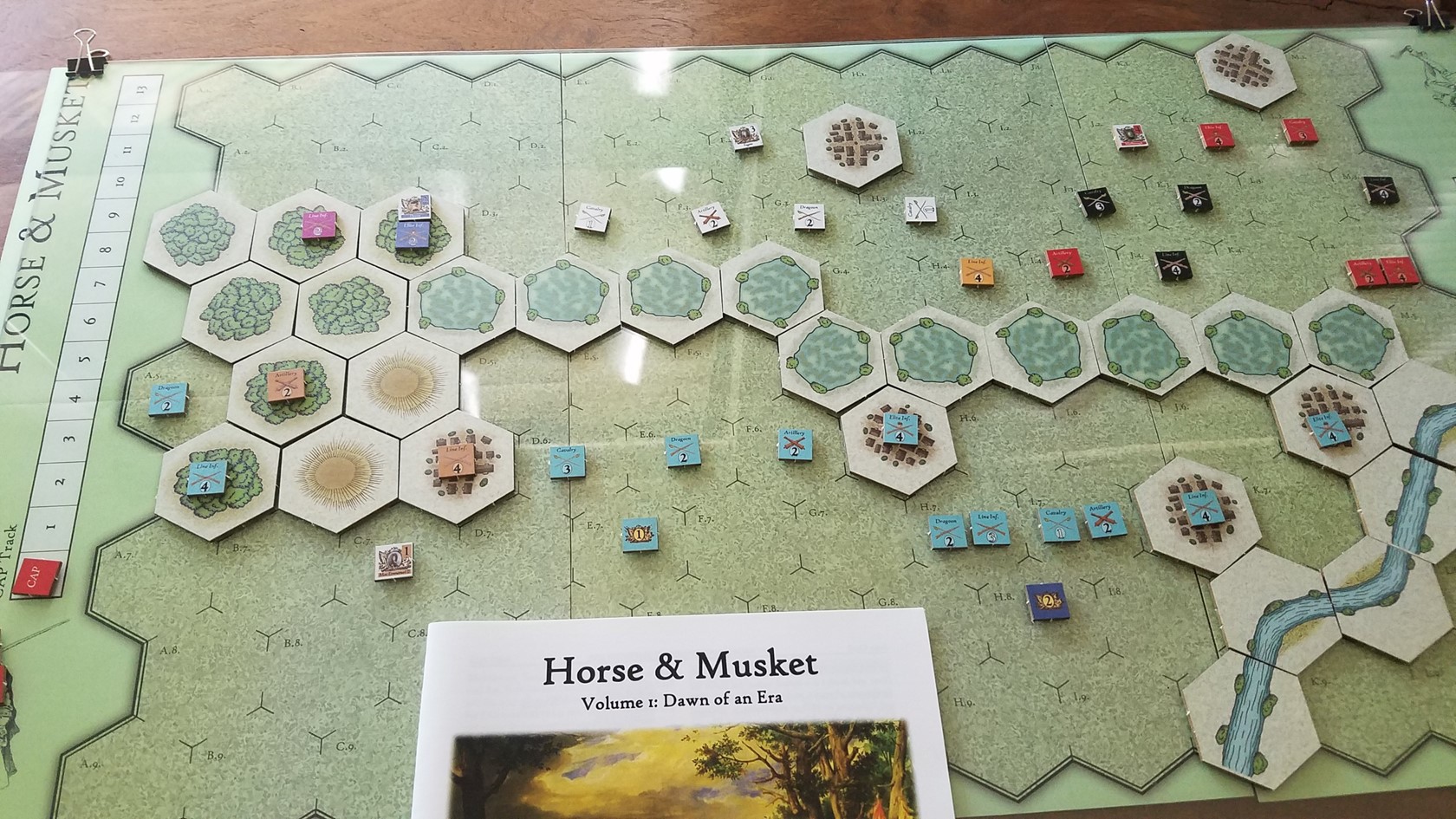
Hollandspiele presents us with a new game system for an era that has been dominated by two other primary products Command & Colors Napoleonic’s and Musket & Pike. One a simple abstract system the other a deeper richer but more complex game that is primarily focused upon pre Napoleonic warfare. This first volume of H&M showcases 20 battles from 1683 to 1719. You are placed in the Role of ‘battle commander’ or overall commander at a tactical level. You will choose which formation attacks or defends and when and where to maneuver in the Decision Space. Maps, terrain tiles and counters are well designed, era specific and thematic.
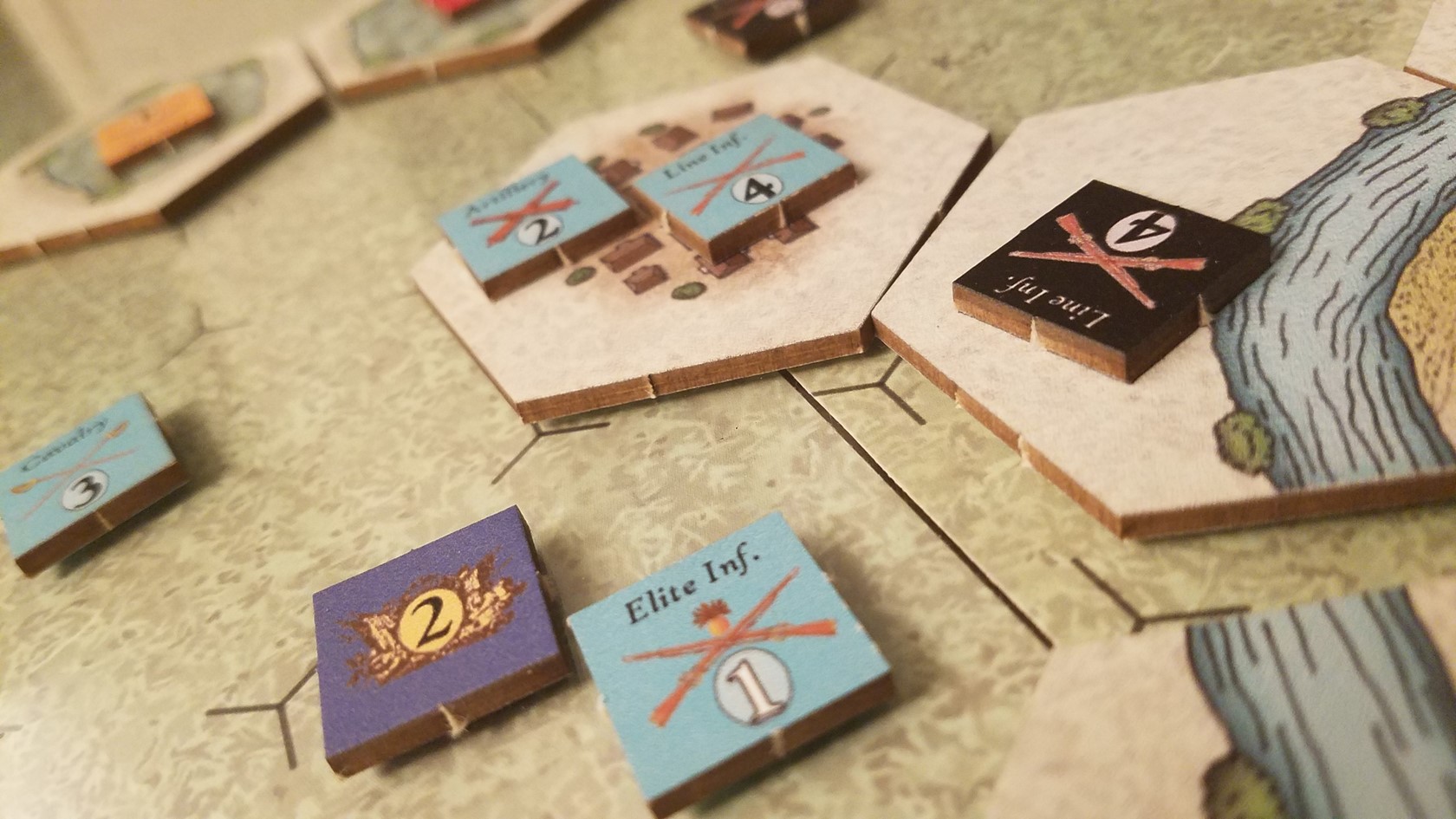
Thick large counters greet you. They seem to swim on extra large hexes with terrain tiles providing the specific battlefield terrain. This takes a bit of getting used to.
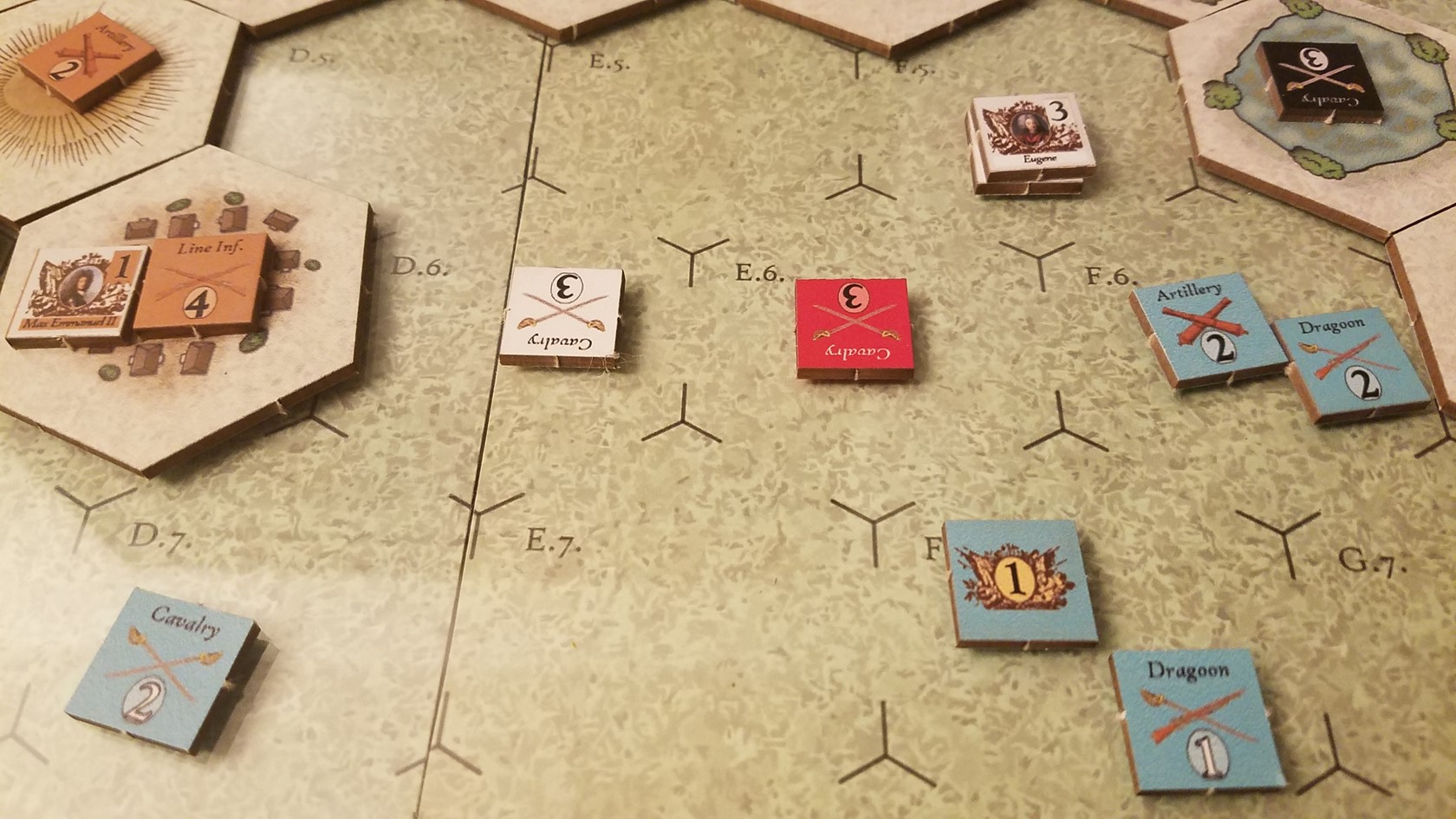
Each unit uses a single metric on the counter its Morale Point. The numbers color show full or reduced capability. You can also replace many counters with a similar but lower value unit for a total of 4 steps. Thus the OOB has limited granularity, in that it provides the units present at the battle and their relative strengths, but that is the extent. No specific unit formations, with banded epaulettes etc. The game does provide a strong Narrative. This is driven by ease of play, and the thoughtfully written scenario rules that outline the history, specific rules guide the play around the battles themselves. The action point tracks provide a strong level of uncertainty for each turn, and across the scenario aiding replay value
Play time is rapid, this is an easy game to get into and can we quickly exercised [see live play example on Youtube channel].
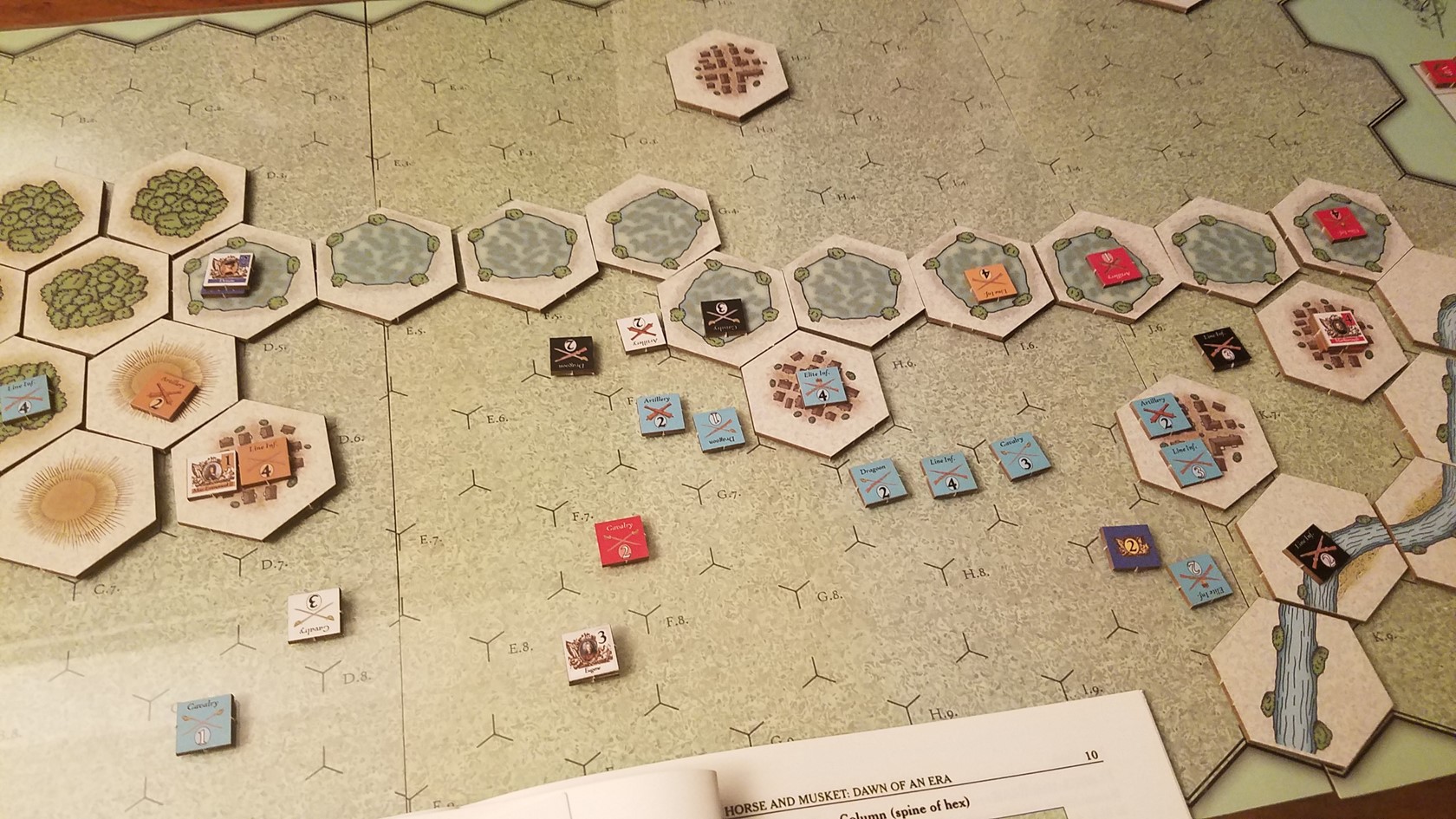
This is an age of Linear movement. The primary change from Ancient warfare is weapons. The same tactics, the same formations and the same command systems are used. – Classical warfare. It is therefore a little odd to see square units in these large hexes. I wondered as I played how different the game would look with rectangular counters? Given the linear nature of the battles in this period there is no proscription to lines being separated or dispersed which is one immediate difference to a game such as Musket & Pike or for Ancients Great Battles of History where line breaks will end you. Here it can be tragic but not a game killer.
The early movements in this battle focused on flanking opportunities to thin the center of the French. Ranged fire and cannonades were effective at close range in a mostly historical manner. With no hexes scale similar to CC:N we cant judge ‘historical fidelity’ of weapons charts. The German/Prussian forces of the Grand Alliance pressed the attack at great cost, but were rebuffed by Elite French infantry. Only Marlborough’s intervention allowed some rallying up to full strength. The physical simulation allows for recovery and loss of ‘strength’ as represented by the counters. We lack the sense of scale or time, but can surmise that given that each is a battle sized then we can surmise that each turn is likely under an hour and each ‘space’ 150-500m. The game is an abstraction of detail that many era enthusiasts might find disappointing. Forces, maps, terrain and time and scale are fungible to some degree.
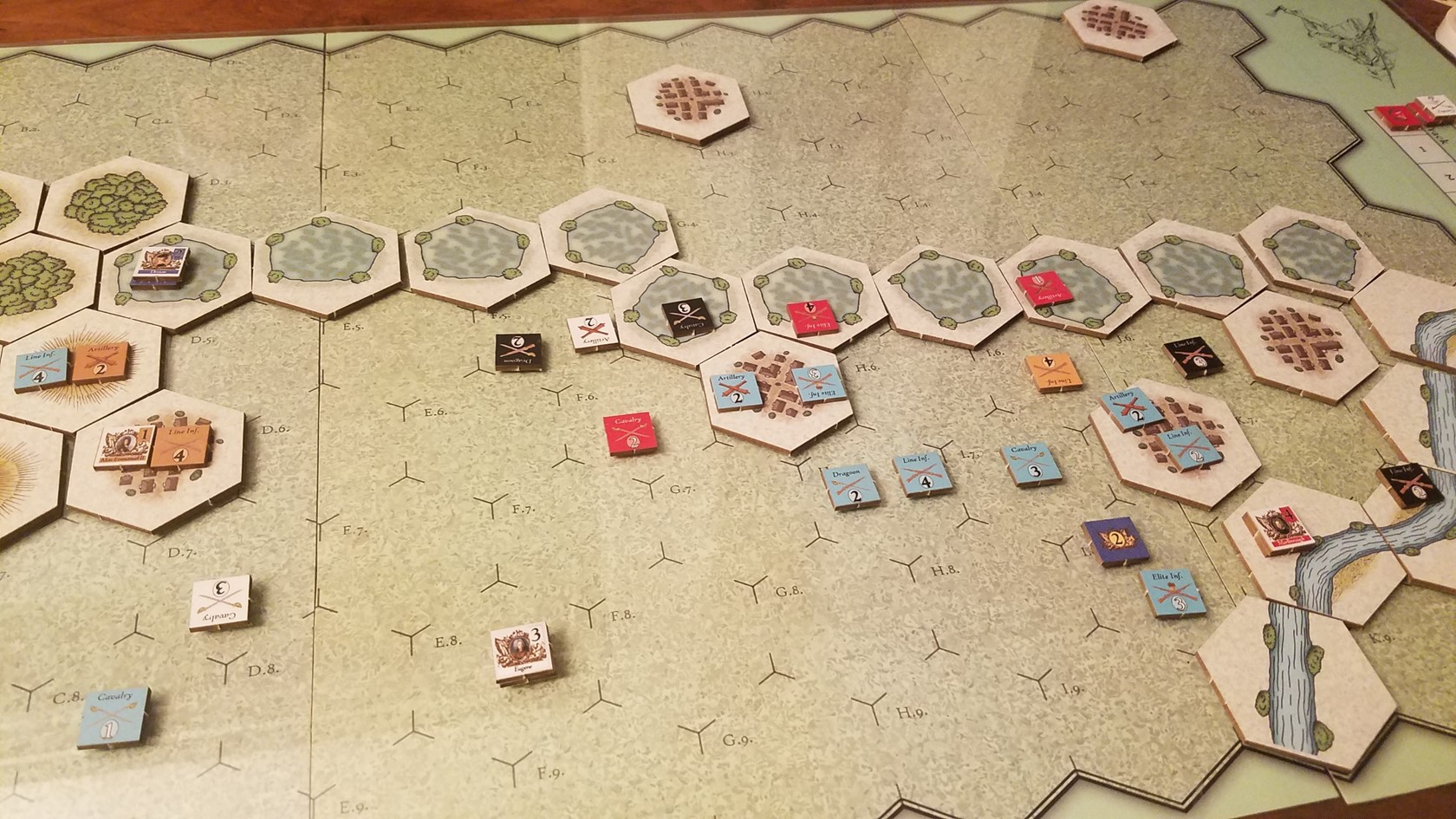
As this battle progressed the Center did indeed collapse as per history blowing open the French line. I did like a swag of the optional rules and used some of them but avoided facing rules, as I imagine at this scale the discrete formation commanders have their heads screwed on right.
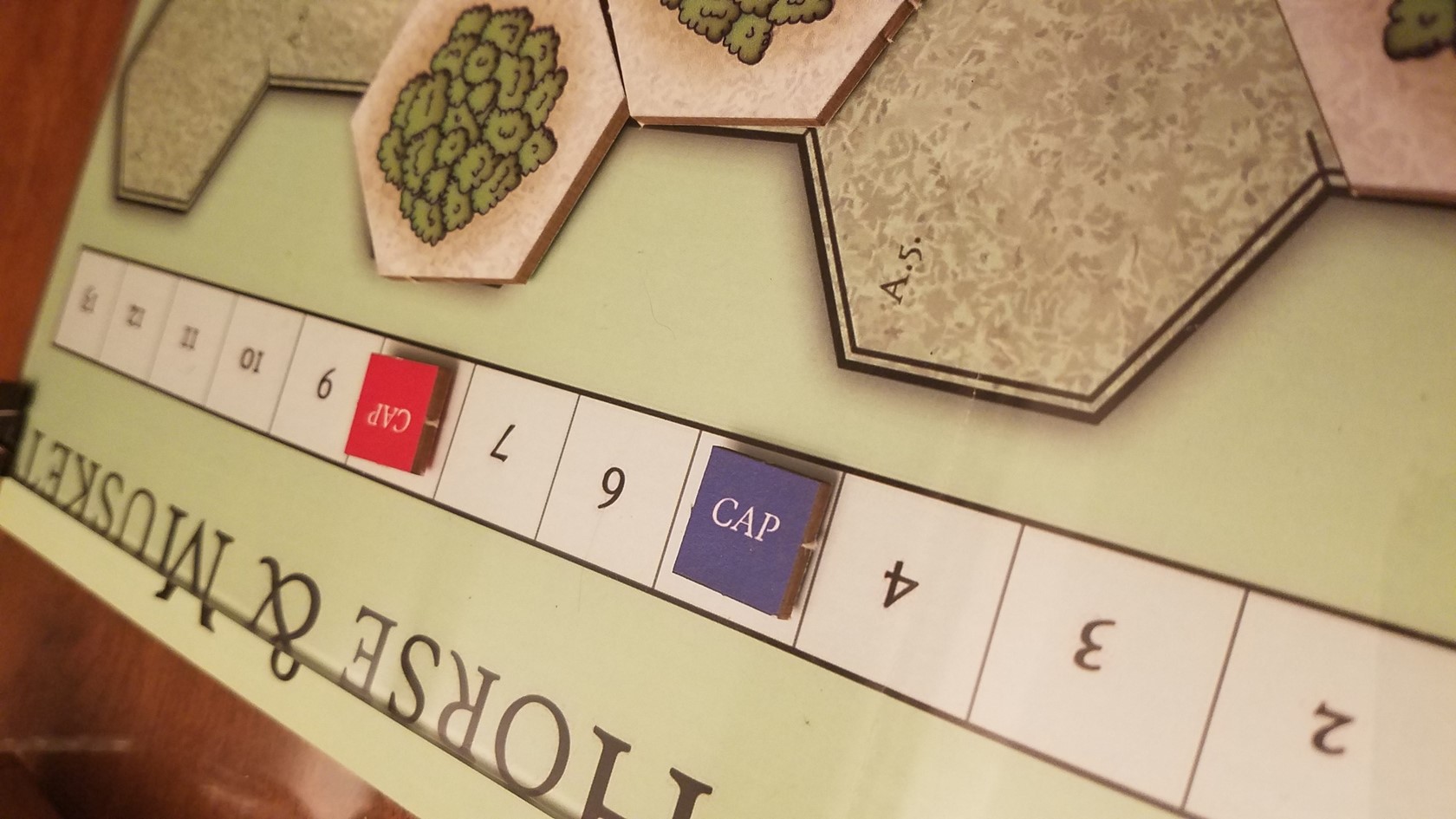
CAP [Command Action Pt] is the center of this game. Each scenario uses a different minimum per turn you receive and each CAP enables actions of units. This forces some choices on the sides, as not all units can do all things needed in a given turn.
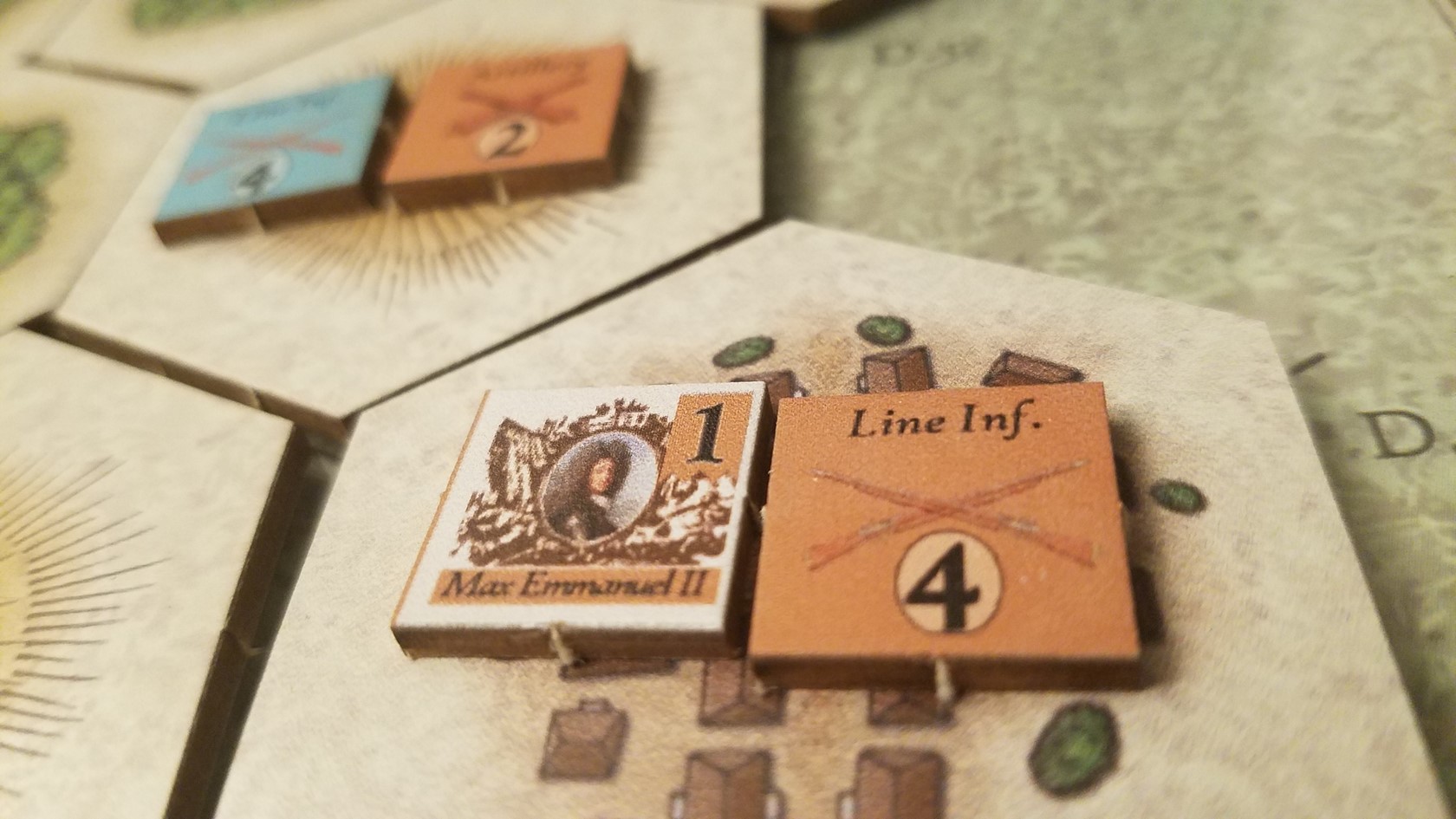
The British elite Infantry below fire effectively (earning an extra die to roll) and are also formidable in melee. The Game does a nice job of simulating national characteristics via a set of rules for each nation outlining extra dice in combat, or detriments to movement, advances and the like. Thoughtful, easy and effective.
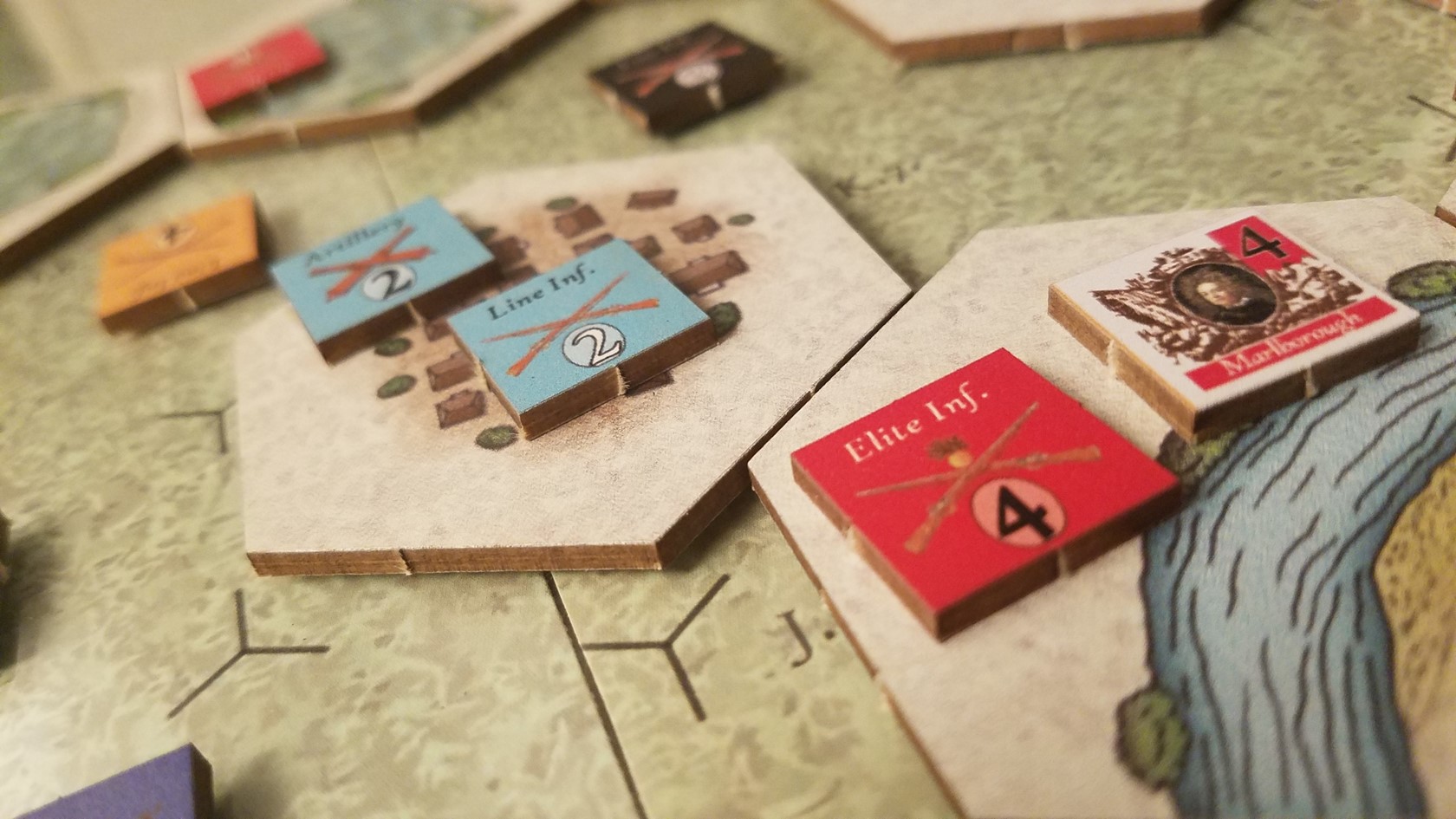
At the games conclusion I felt as though I had fun time, exploring at an abstract level the tactical challenges of the days battle.
It is something I can see easily being pulled out and played at the local game store or against a friend with zero knowledge of the system and be done in an hour or 1 ½ hours tops. A solid Intro level title from Hollandspiele.
With 20 battles for about $80 bucks, you do the math on bang for buck versus Command and Colors or the now mostly OOP M&P.
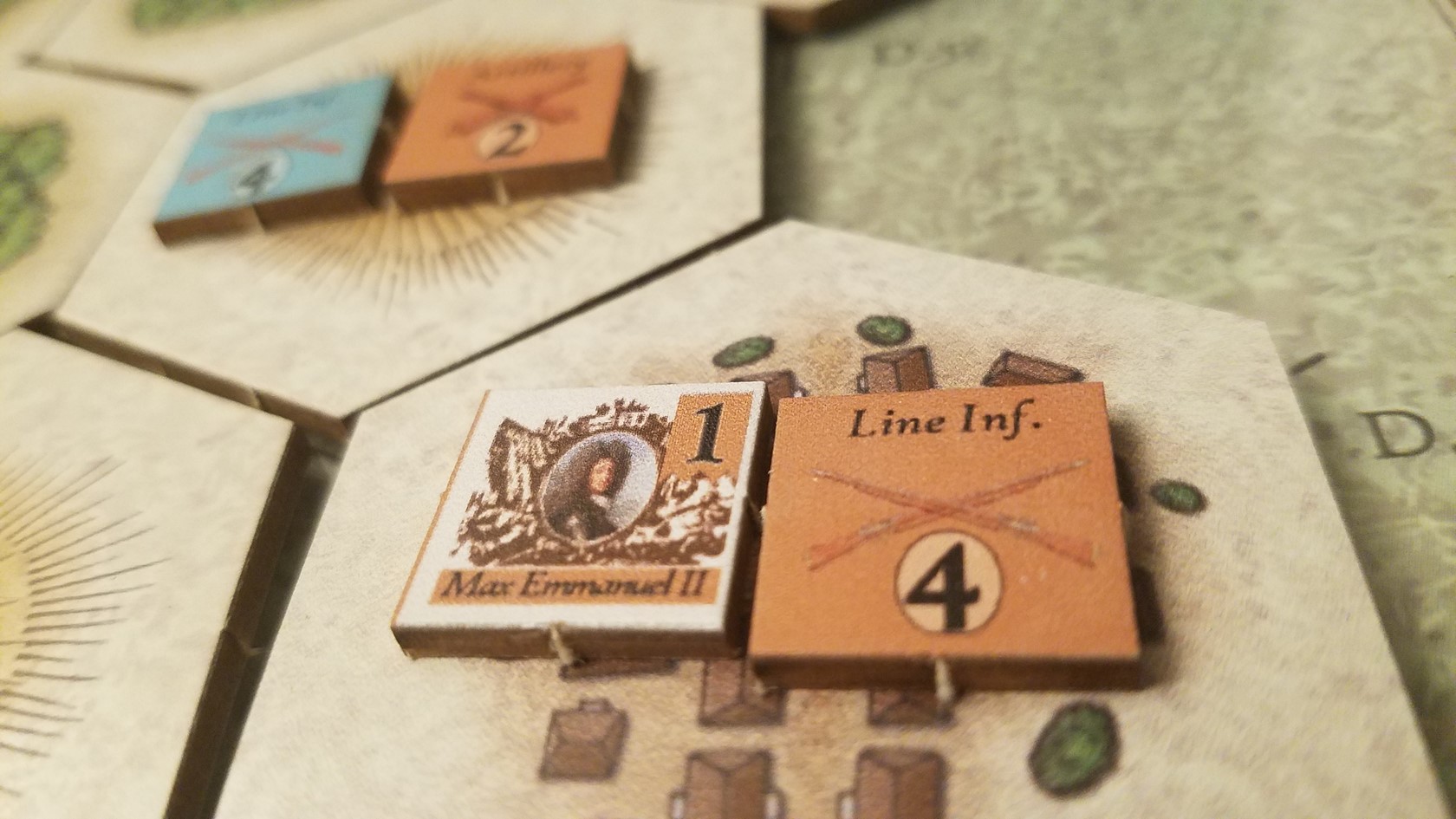
As a new Hollandspiele addict, this was quite interesting to me – I really like the graphics for this game (as your photos showed).
Thanks for taking the time to create this!
Cheers. Thanks for checking it out. Game plays great. Tho you lose the linear visuals in big hexes.